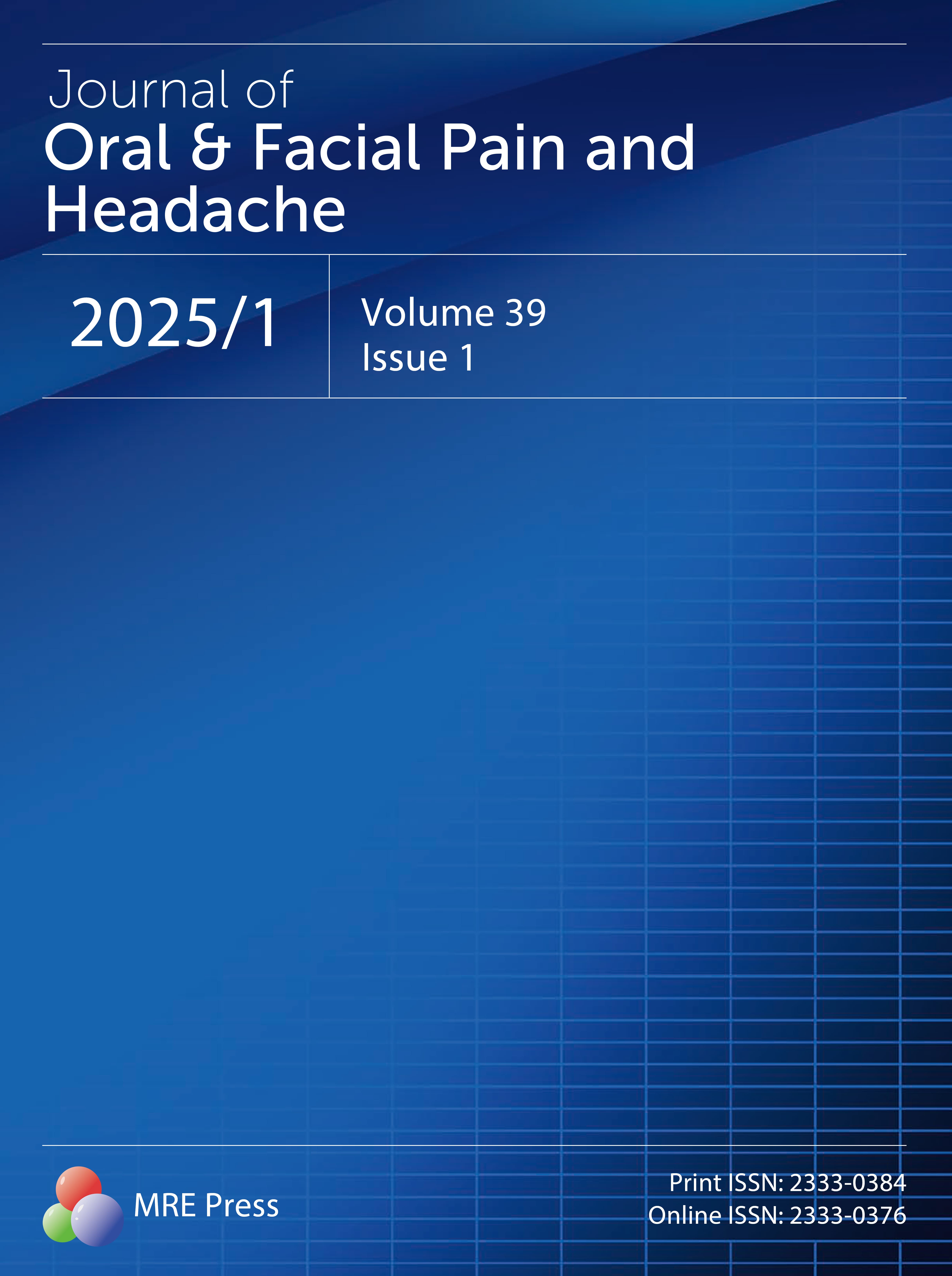Title
Author
DOI
Article Type
Special Issue
Volume
Issue
Article Menu
Export Article
More by Authors Links
Article Data
- Views 639
- Dowloads 58
Journal of Oral & Facial Pain and Headache (OFPH) is published by MRE Press from Volume 38 lssue 1 (2024). Previous articles were published by another publisher on a subscription basis, and they are hosted by MRE Press on www.jofph.com as a courtesy and upon agreement with Journal of Oral & Facial Pain and Headache.
Original Research
Open AccessAdolescent TMJ Tomography and Magnetic Resonance Imaging: A Comparative Analysis
Adolescent TMJ Tomography and Magnetic Resonance Imaging: A Comparative Analysis
1Department of Orthodontics, University of Toronto, Toronto, Ontario M5G 1G6, Canada
*Corresponding Author(s): Lome Kamelchuk E-mail: lorne.ksmelchuk@utoronto.ca
Abstract
The predictive value of radiographic tomography was assessed using magnetic resonance imaging as a definitive test of TMJ soft-tissue status in a predominantly asymptomatic adolescent sample. Eighty-two TMJs in 41 subjects (mean age = 12.5 years, range = 10 to 17 years) were independently evaluated using axially corrected tomography and magnetic resonance imaging. Tests of comparison and correlation were performed. Correspondence of tomographic classification to magnetic resonance imaging classification of nondisplacement (55%), reducing internal derangement (35%), or nonreducing internal derangement (10%) showed a significant relationship (P < .05). Tomography as a diagnostic test of abnormal disc position had a sensitivity of 0.43, a specificity of 0.80, a positive predictive value of 0.64, and a negative predictive value of 0.63. Tomography is inappropriate as a diagnostic test for TMJ internal derangement.
Keywords
tomography; magnetic resonance imaging; adolescent; temporomandibular joint
Cite and Share
Lome Kamelchuk, Brian Nebbe, Charles Baker, Paul Major. Adolescent TMJ Tomography and Magnetic Resonance Imaging: A Comparative Analysis. Journal of Oral & Facial Pain and Headache. 1997. 11(4);321-327.
References

Abstracted / indexed in
Science Citation Index (SCI)
Science Citation Index Expanded (SCIE)
BIOSIS Previews
Scopus
Cumulative Index to Nursing and Allied Health Literature (CINAHL)
Submission Turnaround Time
Editorial review: 1 - 7 days
Peer review: 1 - 3 months
Publish Ahead of Print: within 2 months after being accepted
Notes: Your information is kept confidential throughout the review process.
Top
